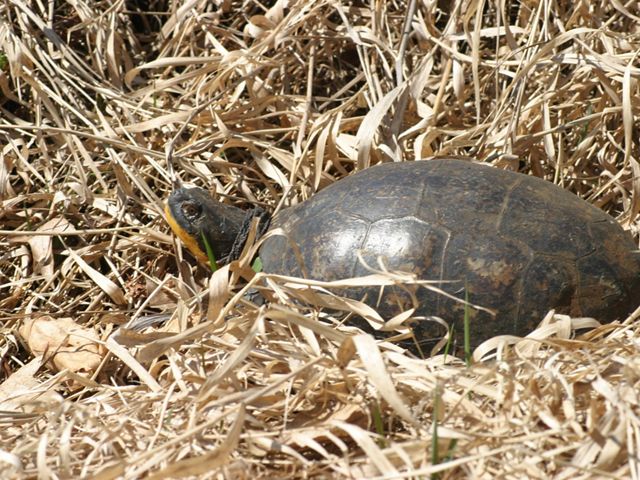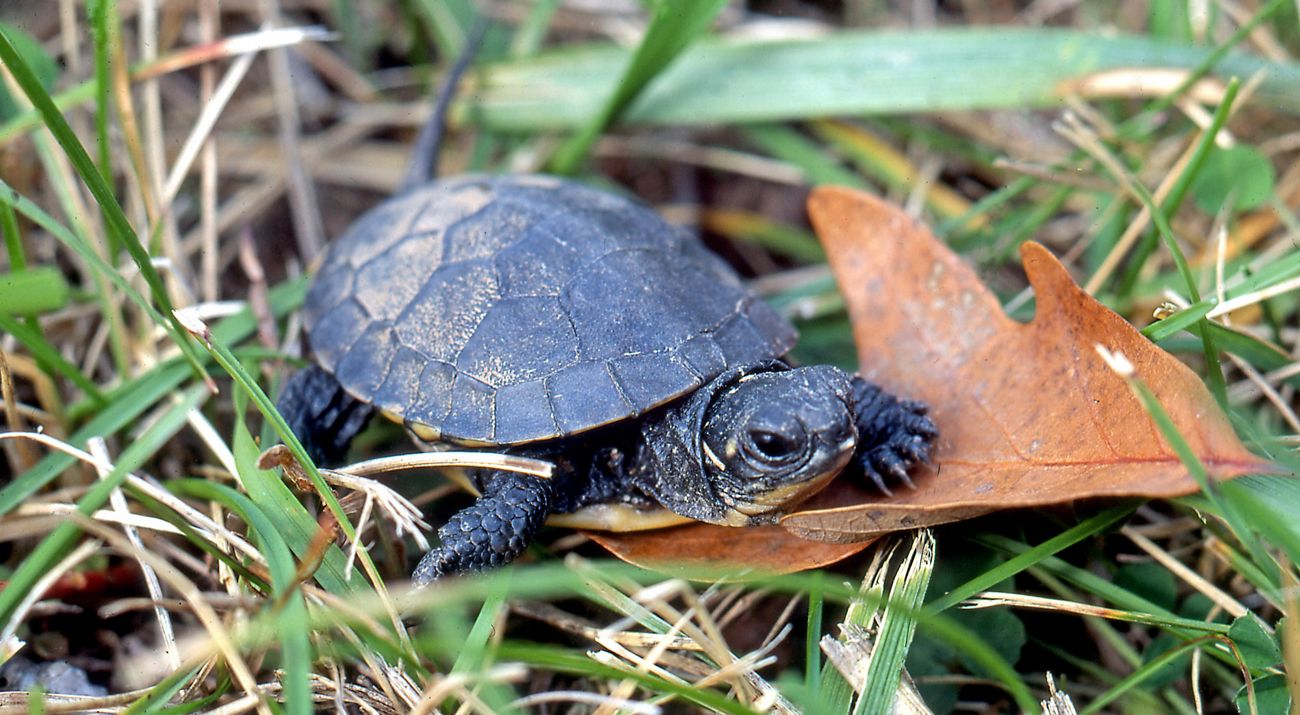Meet the Blanding’s Turtle
Sometimes confused with box turtles, the Blanding’s turtle is recognizable by the bright yellow on its chin and throat and the light dots across its high-domed shell. Medium-sized, it averages 5-7 inches in length. The Blanding’s turtle is mostly aquatic, dwelling in relatively quiet waters of bogs, marshes, small streams, sedge meadows and in the shallow portions of lakes from Nebraska to Nova Scotia, though populations east of Ohio are discontinuous. The turtle is named for William Blanding, an early naturalist in Pennsylvania, where is it now ironically extirpated.
Blanding’s turtles are mostly carnivorous, often feeding underwater, preferring:
snails
insects
tadpoles
frogs
crayfish
Females travel overland to nesting sites, laying a clutch of about 12 eggs that incubate 45-80 days, depending on nest moisture and temperature. As with other turtles, nest temperature determines sex. Females become sexually mature around 18 years, males around 12 years. Hatchling survival rates are low, but those that do survive may live up to 77 years. A shy animal, the Blanding’s turtle will dive and remain submerged for hours if startled and will abandon disturbed nests.

Protecting the Blanding’s Turtle
Habitat destruction and fragmentation is the main threat to the Blanding’s turtle. As a nomadic species, the shy turtle will wander and cross roads to get from one body of water to another. Road mortality is high. The Nature Conservancy in Maine is attempting to alleviate this issue by adding "Turtle Crossing" signs to various roads in the state that are popular pathways for turtles.
Further west, in Indiana, Illinois, Minnesota and beyond, TNC’s grassland conservation efforts are benefitting Blanding’s turtles. The historical decline in grassland habitat in the Midwest has meant a decline in the pools of water that the turtles depend on.
In 2014, TNC reintroduced bison to the Nachusa Grassland preserve — one of the most diverse and species-rich sites in northern Illinois. The herd was the first to roam east of the Mississippi in almost 200 years. Nachusa also happens to be one of the few places where Blanding’s turtles have managed to persist.
In the summer of 2016, researchers conducted a first-of-its-kind radio telemetry study to track the turtles’ movements.
“We believe the turtles may follow the herd because bison can create new aquatic habitat when they wallow on low-lying spots of the prairie. Their heavy bodies carve out deep depressions which fill with rainwater,” explained Tom Anton, a Northern Illinois University researcher.
Scientists hope to learn how far individual turtles move during the course of an active season—approximately April to October—so that conservation organizations like TNC can know which ponds, corridors, and lands to focus on protecting.
